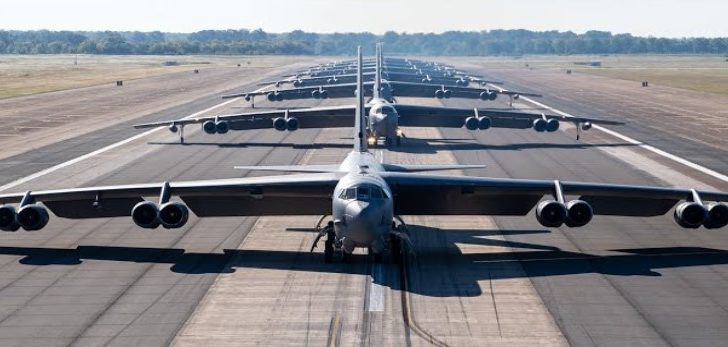The Boeing B-52 Stratofortress is an American long-range, heavy strategic bomber capable of dropping and launching nuclear bombs, missiles, and guided precision weapons. It was first designed by the Boeing company in 1948 for the United States air force.
While this plane may seem like an old relic from the past, here are ten excellent reasons why the B-25 bomber is still unmatched:
1. It was designed during a “Dayton” weekend
The original B-52 design had a rocky start. On October 1948, Boeing Chief Engineer Ed Wells and his team of designers were asked to create a prototype using turbojet engines.
The Air Force’s Air Materiel Command gave them 2 days- a daunting request. Well’s team designed an eight-engine jet bomber in a Dayton hotel room in Ohio that weekend. Their efforts eventually paid off, impressing Air Force’s Air Materiel Command, and the design was approved.
2. It played a key role in history
B-52s have been around for so long that they played a crucial role in the Cold War and Vietnam War.
It also participated in combat operations in the Global War of Terror, such as bombing runs over Afghanistan and air support missions during Operation Iraqi Freedom.
3. Has an ejection system that spits crew below and above the aircraft
Because the B-52 carries a crew of six on two levels, upward ejection is almost impossible for two crew members on the lower deck.
Thus, a unique ejection apparatus was introduced, a self-contained ejection system for each crew member, coupled with individual hatches to facilitate a quick departure.
4. It will probably stay in service for at least a century
The B-52 first took its maiden voyage in 1952 and was ready for active service in 1955. Other models like the B-2 Spirit and B-1B Lancer were designed during the B-52’s tenure, yet both are now slated for retirement.
Meanwhile, the B-52’s combat life is expected to last until 2045, after more than a century of active service.
5. It shot down enemy fighters in Vietnam
In 1965, the two B-52Ds were mobilized during the escalating conflict in Vietnam. It took down Vietnamese MiG-21s in December 1972, with the final kill happening on Christmas eve.
6. Availability
One of the reasons why B-52s will keep flying the B-52 on any given day is that they’re ready for combat even with very short notice.
The mission-capable rate of the B-52 was 66%. It was significantly higher than the B-2 bomber’s 60% and the B-1 bomber’s 46 %.
7. Excellent technical specs
The B-52 is the only jet in active service with eight (Pratt & Whitney turbofan jet) engines. It can also carry up to a 70,000-pound payload and an unfueled range of up to 8,800 miles.
8. Survivability
The B-52 bomber is equipped with electronic countermeasures, towed decoys, and other aids meant to counter attacks.
9. Cost-Effectiveness
The B-52 is also highly economical, costing $70,000 to fly for an hour. This is roughly the same as flying a B-1 and half of what a will B-2 cost.
10. Versatility
The B-52 can also perform nuclear deference missions. Unlike the B-2 Spirit, it can sustain conventional combat missions against adversaries.
Moreover, its use of aerial refueling is only limited by the crew’s endurance. It boasts of an unrefueled combat range of over 8,800 miles.
The longevity of the B-52 is a testament to its excellent original design and the efforts subsequently maintain the aircraft for years. Now we know why the US Air Force couldn’t let this one go!


